Science Results Archive
| Spotlight | Image |
|---|---|
|
SOFIA Mission Manager’s Update
Eddie Zavala, NASA SOFIA Program Manager Fly 6,900 miles each way, deploy a cadre of flight- and ground-crewmembers along with an international science team for three weeks, and during that time fly three nights per week, 10-hours per flight, while conducting world-class science. It’s a lot to imagine, and even greater to have accomplished it all. |
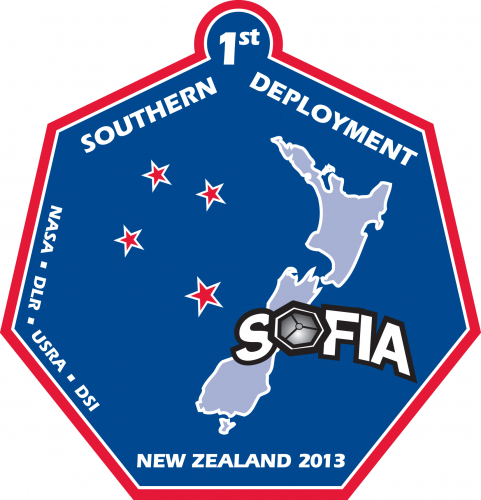
|
|
NASA's SOFIA Investigates the Southern Sky from New Zealand
NASA's SOFIA airborne observatory will be based in New Zealand for the next two weeks, taking advantage of the Southern Hemisphere's orientation to study celestial objects that are difficult or impossible to see in the northern sky. |
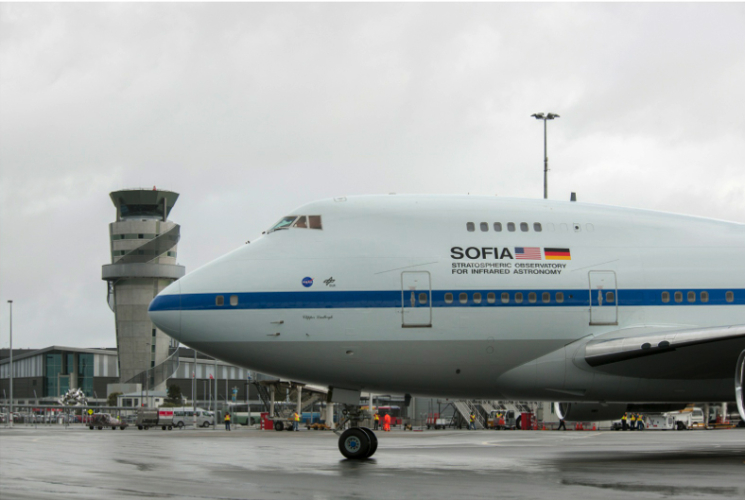
|
|
SOFIA Observations Reveal a Surprise in Massive Star Formation
Researchers using the airborne Stratospheric Observatory for Infrared Astronomy (SOFIA) have captured the most detailed mid-infrared images yet of a massive star condensing within a dense cocoon of dust and gas. The star is G35.20-0.74, more commonly known as G35. It is one of the most massive known protostars and is located relatively close to Earth at a distance of 8,000 light years. |

|
|
NASA's SOFIA Flying Observatory Marks 100th Flight
On the afternoon of April 11, 2013, members of SOFIA's staff gathered to commemorate the 100th flight of NASA's airborne observatory. SOFIA departed from the Dryden Aircraft Operations Facility at Palmdale, Calif., that evening at 7:09 p.m. local time. |
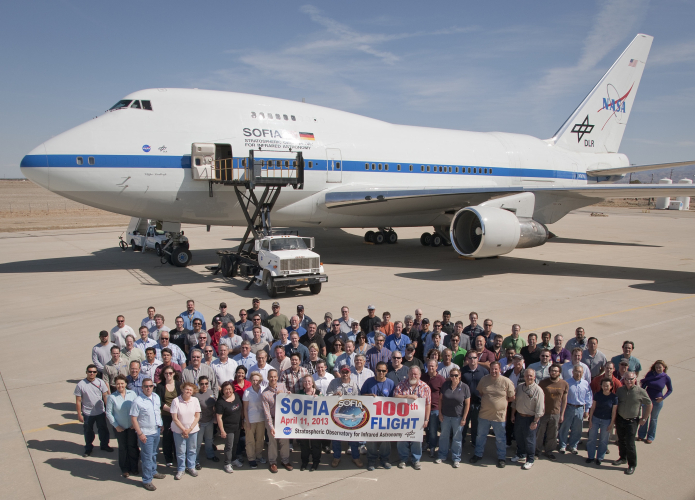
|
|
Educator Teams Fly on NASA'S SOFIA Airborne Observatory
The first four Airborne Astronomy Ambassador (AAA) educators returned safely to Earth, landing in Palmdale, Calif. early in the morning Wednesday, Feb. 13, 2013, after completing their initial flight on NASA’s Stratospheric Observatory for Infrared Astronomy, SOFIA. That flight launched the AAA program’s first full year of operations, during which 26 educators from classrooms and science centers across the United States will fly on SOFIA as partners with scientists conducting astronomy research using the airborne observatory. |
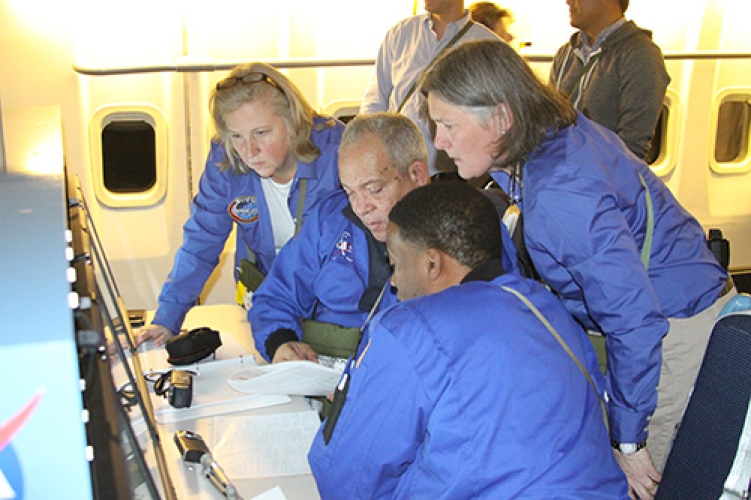
|
|
USRA SOFIA Associate Director Helen Hall Recognized by Industry Group
Helen Hall, University Space Research Association (USRA) associate director for Program Management for NASA’s Stratospheric Observatory for Infrared Astronomy (SOFIA), was recently recognized by SPIE Women in Optics, the international society for optics and photonics, for inclusion in the organization’s 2013-2014 date planner. SPIE’s Women in Optics group promotes personal and professional growth for women through community building, networking opportunities, and encouraging young women to choose careers in optical tecnology. |
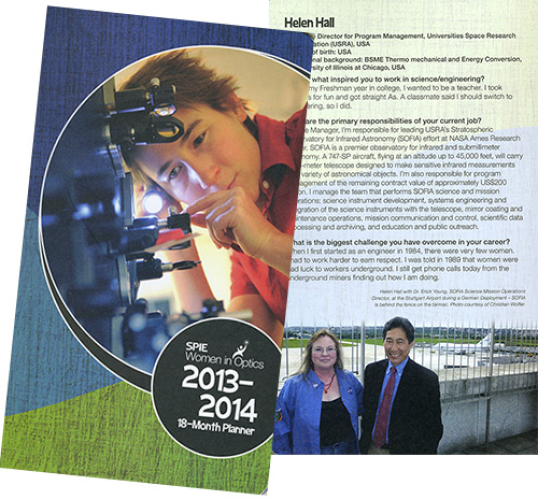
|
|
SOFIA Spots Recent Starbursts in the Milky Way Galaxy's Center
Researchers using the Stratospheric Observatory for Infrared Astronomy (SOFIA) have captured new images of a ring of gas and dust seven light-years in diameter surrounding the supermassive black hole at the center of the Milky Way, and of a neighboring cluster of extremely luminous young stars embedded in dust cocoons. |
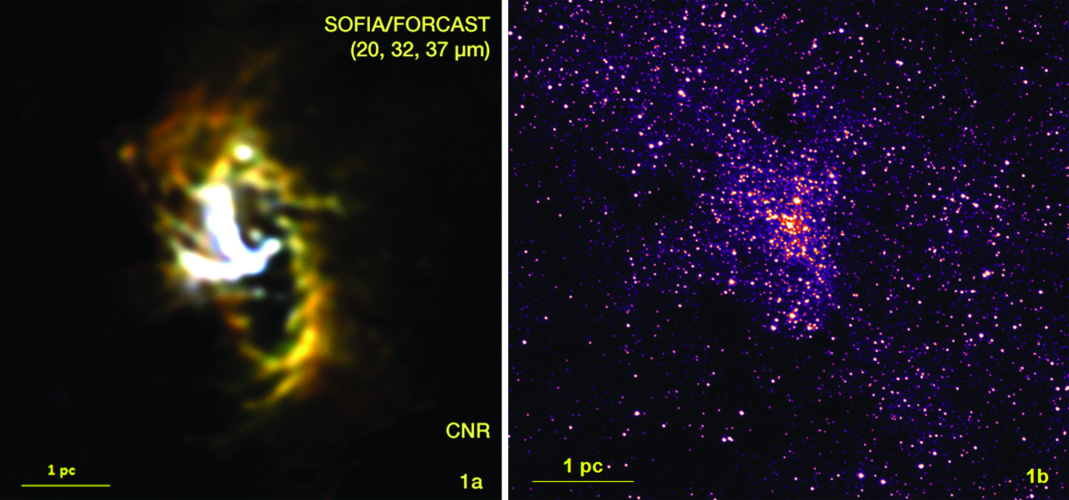
|
|
SOFIA Upgrades: Integrating Telescope Onboard Command and Control Systems
NASA's Stratospheric Observatory for Infrared Astronomy (SOFIA) aircraft has recently received major upgrades to its observatory and avionics systems that will significantly improve the systems' efficiency and operability. |

|
|
Two New Molecules Detected with SOFIA
Scientific results from observations made in 2011 from NASA’s Stratospheric Observatory for Infrared Astronomy, SOFIA, show the first detection in the interstellar medium of two molecules, the mercapto radical SH and the deuterated hydroxyl radical OD. SH is important for the investigation of sulfur chemistry in the interstellar medium, and OD, a version of hydroxyl (OH) with the hydrogen atom replaced by a heavier deuterium atom, plays a corresponding role in understanding the chemical pathways for formation of water in the universe. |
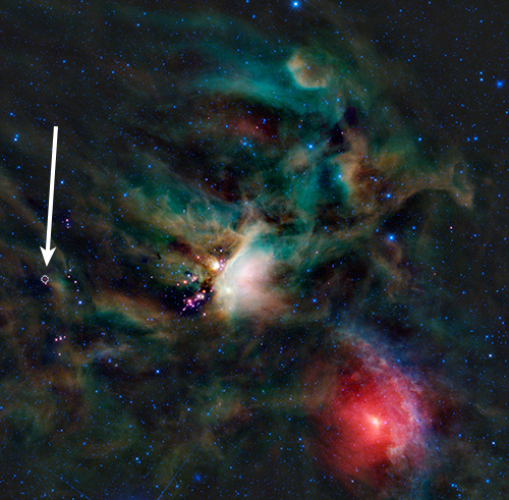
|
|
SOFIA Mirror Cleaned to Prepare for Next Missions
The 2.5-meter mirror on NASA's Stratospheric Observatory for Infrared Astronomy telescope was cleaned recently in preparation for its first full cycle of science observations. Telescope technicians at the Dryden Aircraft Operations Facility used water, a mild detergent and a small filtered blower to remove dust and other material that had adhered to the mirror's surface. |
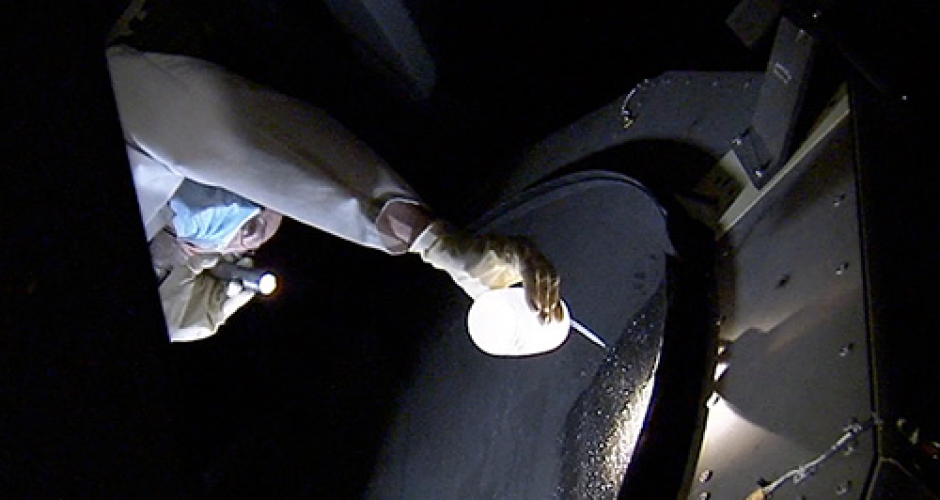
|
|
NASA's SOFIA to Embark on New Cycle of Science Observations
The Stratospheric Observatory for Infrared Astronomy, or SOFIA, a joint program between NASA and the German Aerospace Center DLR, is set to begin its first full cycle of science flights starting in November 2012 and extending through December 2013. SOFIA’s Science Mission Operations Director Erick Young today announced the list of researchers who have been awarded time to study the universe with this unique infrared observatory. |
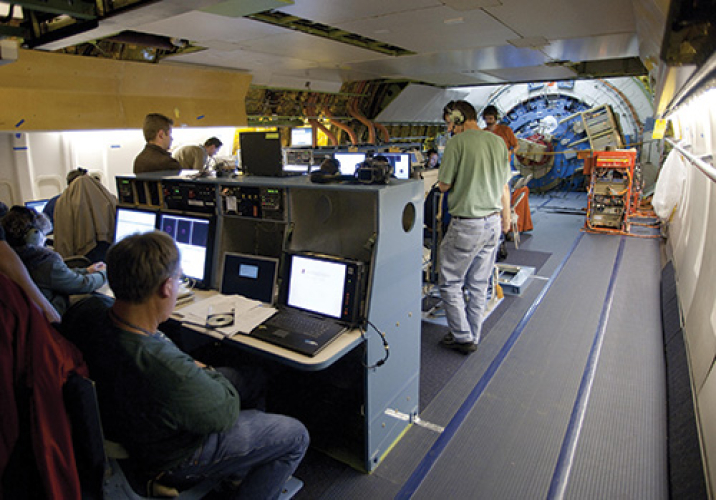
|
|
SOFIA Observations of the Sharpless 140 Star-Forming Region
Information about the star formation process, as well as early tests of the optical quality and stability of the telescope in NASA's Statospheric Observatory for Infrared Astronomy (SOFIA), were provided by analyses of infrared images of the Sharpless 140 nebula performed by Paul Harvey of the University of Texas at Austin with collaborators from Cornell University, Ithaca College, and the SOFIA scientific staff. The results of their work were published in a May 2012 special SOFIA-dedicated issue of The Astrophysical Journal Letters . |
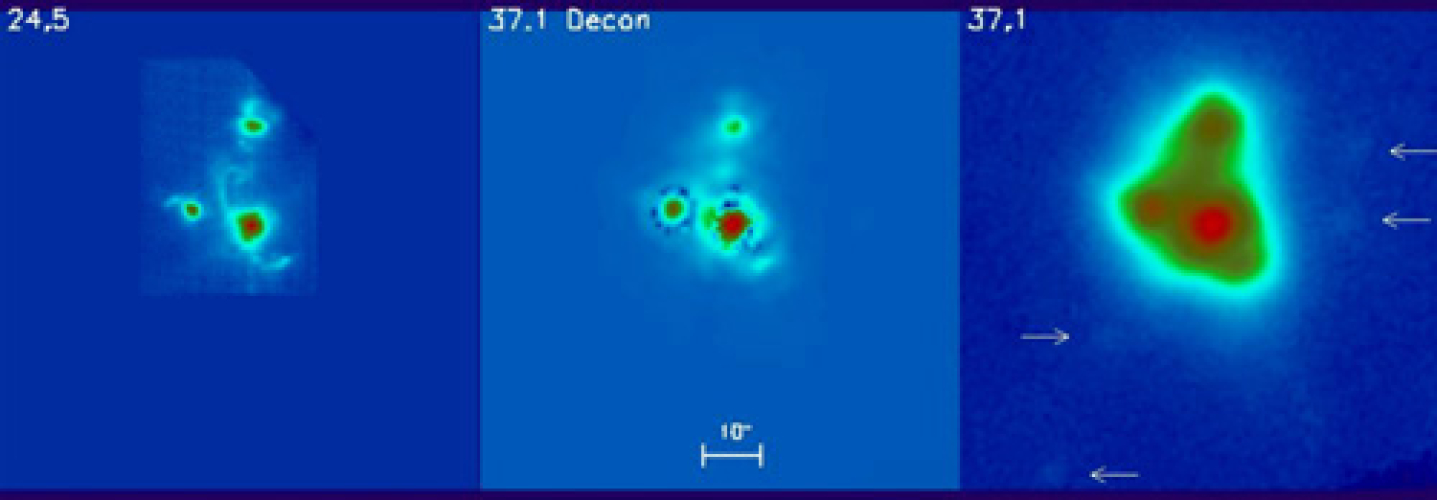
|
|
Submillimeter Polarization of Galactic Clouds Studied by SOFIA scientist
Research by SOFIA scientist John Vaillancourt (Universities Space Research Association, NASA Ames Research Center, Calif.) and Brenda C. Matthews (Herzberg Institute, National Research Council of Canada, Victoria, B.C., Canada) on interstellar clouds in the Milky Way Galaxy was recently published in the The Astrophysical Journal Supplement Series, a venue for presentation of very large data sets. |
|
|
More than 150,000 Visit Local SOFIA Displays
In fall 2010, displays depicting the history and achievements of NASA’s Stratospheric Observatory for Infrared Astronomy (SOFIA) were installed at three Northern California venues – NASA Ames’ Exploration Center, the Ames Aerospace Encounter, and the Hiller Aviation Museum. One year later, more than 150,000 guests have seen the displays and had an introduction to astronomy at infrared wavelengths. |
|
|
SOFIA Scientists' Paper Highlighted by The Astronomical Journal
Margaret M. Hanson, associate editor-in-chief of The Astronomical Journal , cited three recent scientific papers that highlight the diversity of research being conducted by the Galactic community. |
|
|
SOFIA Science Featured in The Astrophysical Journal Special Edition
The Astrophysical Journal , a leading U.S. astronomy research publication, issued a special edition of its Letters volume on April 20 with papers about observations made with SOFIA. SOFIA is a highly modified Boeing 747SP aircraft that carries a telescope with a 100-inch (2.5-meter) diameter reflecting mirror that conducts astronomy research not possible with ground-based telescopes. By operating in the stratosphere at altitudes up to 45,000 feet, SOFIA can make observations above the water vapor in Earth's lower atmosphere. |
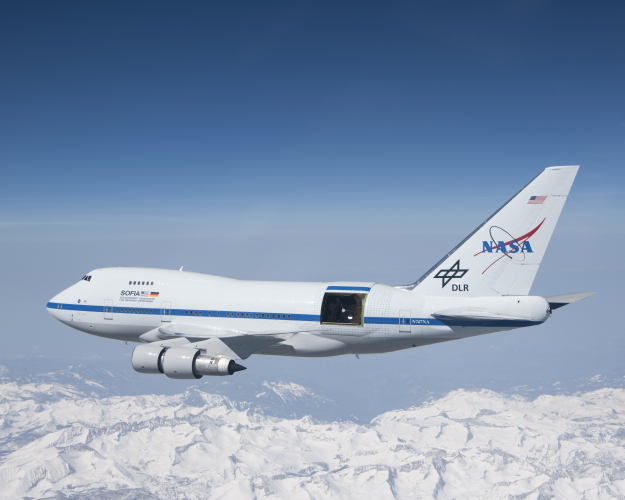
|
|
NASA Selects Science Instrument Upgrade for Flying Observatory
NASA has selected a science instrument upgrade to the Stratospheric Observatory for Infrared Astronomy (SOFIA) airborne observatory. The instrument, the High-resolution Airborne Wideband Camera (HAWC), will provide a sensitive, versatile and reliable imaging capability to the SOFIA user community. The upgrade involves two proposals that will allow the observatory to measure the structure and strength of magnetic fields in diverse objects throughout the universe, such as star-forming clouds and galaxies. |
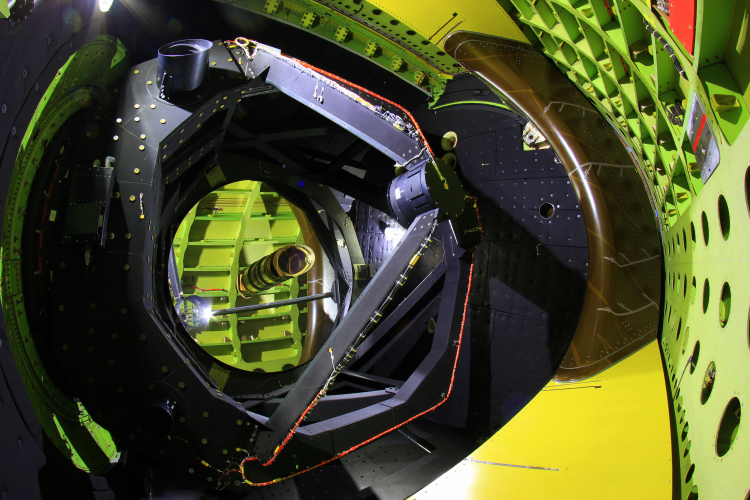
|
|
NASA's SOFIA Captures Images of the Planetary Nebula M2-9
Researchers using NASA’s Stratospheric Observatory for Infrared Astronomy (SOFIA) have captured infrared images of the last exhalations of a dying sun-like star. The object observed by SOFIA, planetary nebula Minkowski 2-9, or M2-9 for short, is seen in this three-color composite image. The SOFIA observations were made at the mid-infrared wavelengths of 20, 24, and 37 microns. The 37-micron wavelength band detects the strongest emissions from the nebula and is impossible to observe from ground-based telescopes. |

|
|
SOFIA Featured in Video Series
SOFIA is the subject of the new "Destination Innovation" video series produced at NASA Ames. Episode 2, "Window to the Hidden Universe," was produced by the Ames Video team with support from the Dryden Public Affairs video staff. The video is available on YouTube and VMIX . |

|
|
Science Bulletins: SOFIA: Stars and the Space Between
The American Museum of Natural History has launched SOFIA: Stars and the Space Between, an 8-minute video that will play at the museum for the next six months. It's also available on YouTube . Science Bulletins is a production of the National Center for Science Literacy, Education, and Technology (NCSLET), part of the Department of Education at the American Museum of Natural History. |
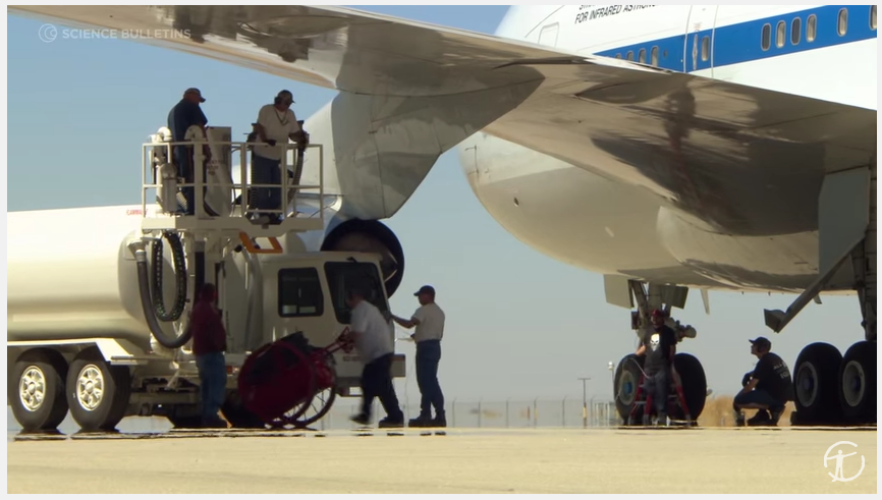
|